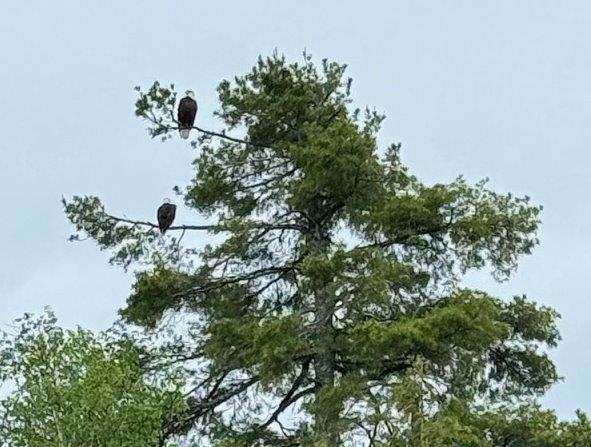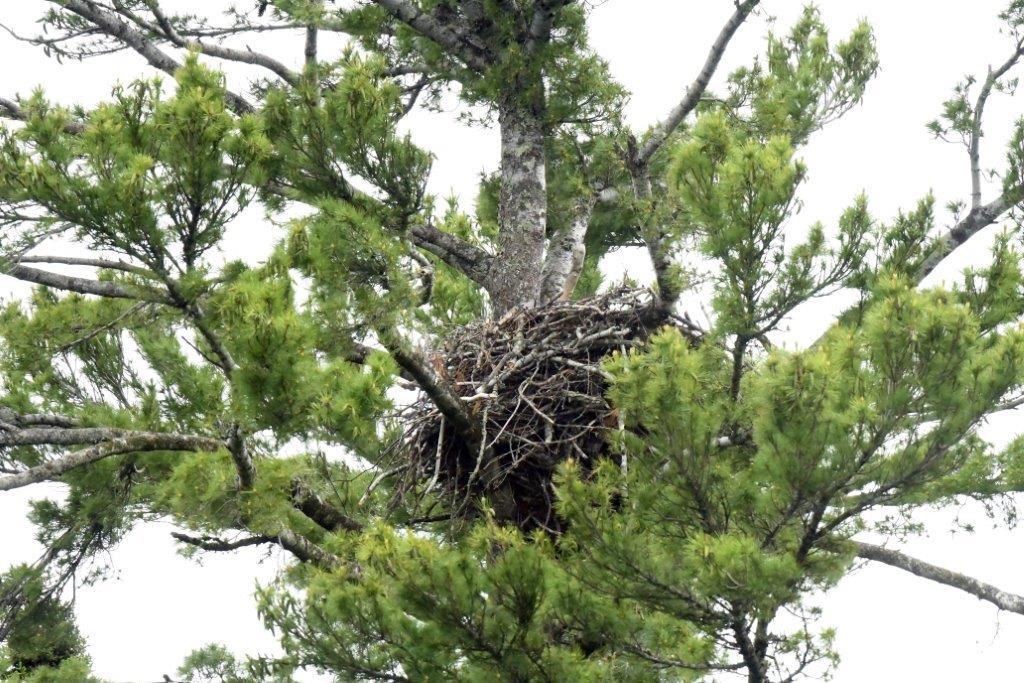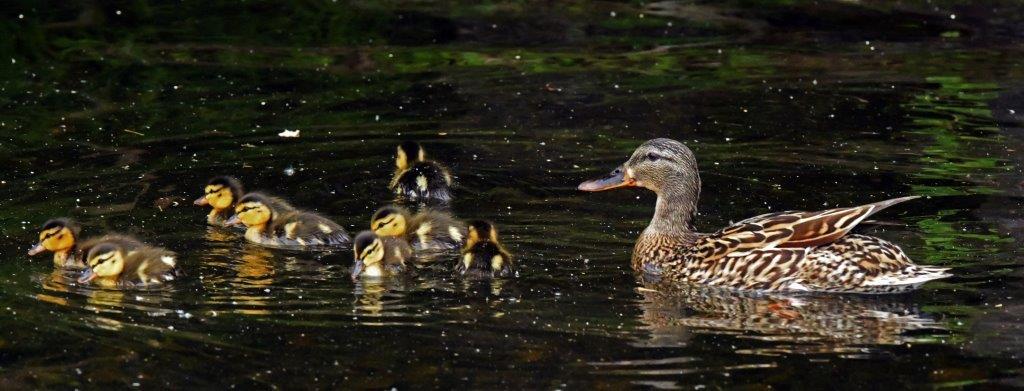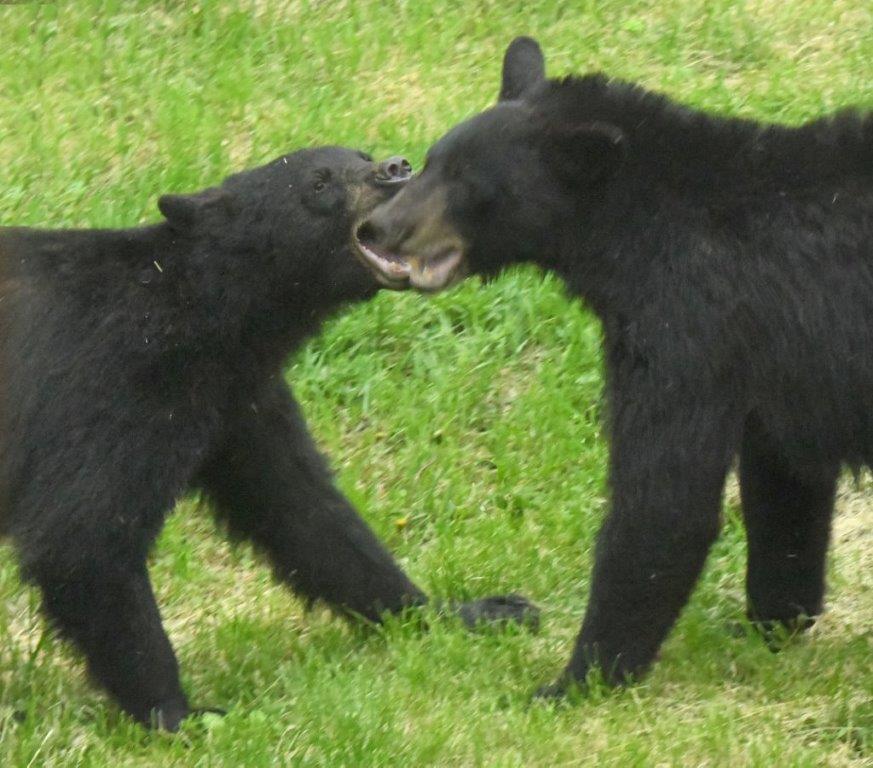Lily, her cubs, and good times - UPDATE June 16, 2024

Lily with 4 cubs
Two days ago, a trail camera caught Lily and her four cubs arriving at a house with bear-hearted people who had been waiting for her. And they were again happy to see her the next morning shortly after sunrise, making us all feel that the world was right to have Lily and her family back in the fold.

Bald eagle pair
Bald eagle pair

Bald eagle nest holding 2 young
Bald eagle nest holding 2 young
Yesterday, Judy and Carolyn told me it was time to move the pontoon to the easy access dock we use during the courses that will be starting in about three weeks. On the way, Carolyn was excited to be on the pontoon boat for the first time and asked if we could take the long way. Carolyn was a policeman in her other life, so I pretty much do what she says. We showed her where Lily gave birth to Hope in 2010, and we passed the eagle nest to see how many young heads were sticking up. Two young heads briefly were seen but not when a camera was ready. We’ll be seeing how they’re doing on every pontoon ride this summer. Looking for their parents, they were nearby resting together in the top of a white pine.

Mallard w/8 ducklings
Mallard with 8 ducklings
As we approached our dock destination, we saw two mallard mothers with ducklings near the shore with the ducklings grabbing leaves to eat. Then came a sight that was new. In a spot where the water was reflecting a dark shoreline, eight ducklings looked like jewels against the dark water. The white spots on the water are fuzzy windblown bigtooth aspen (Populus grandidentata) seeds that did not make it to moist soil where they could germinate.

WRI drone shot
WRI drone shot
Yesterday afternoon, my old friend Mark Peterson stopped by with a new toy—an amazing drone that he had take the picture of Woods Lake in the foreground, the WRI cabin on the hill, and Eagles Nest Lakes One and Three in the background.

Juveniles play fighting
Juveniles play fighting
Today, outside my desk window, two juvenile males ended their day with a friendly, quiet play-fight in which they take each other down and made quick movements pretending to bite but without any power. As I’ve mentioned before, Gerry Bear showed me how it is done, taking me down, biting lightly, but never breaking my skin which is not a tough as bear skin. When I’d had enough roughhousing, I’d put my arm in her mouth to stop her strong efforts to control me. I knew she wouldn’t bite hard. I’d grab her forearm, roll her on her back, and rub her belly; which put her in a different mood. Gerry is the only bear that ever did that with me. The bears we walked with on our 24-hour observation periods did not look at us like that. They seemed to regard an observer as not much more than an inconsequential presence to be ignored as they went about their lives. Gerry was different because she’d been abandoned in Michigan when she was about six weeks old. A caring caretaker then bottle-fed her and cuddled her during her critical socialization period from 6 to 12 weeks of age. When the plane from the Michigan DNR landed on April 7, 1989, the official opened the door, and she came bouncing out to begin smelling the shoes of the dozen people who were there to meet her. I wondered if she was looking for her caretaker. When she got to me, I got down on my hands and knees and greeted her like a bear, touching noses. She hadn’t found her caretaker, but it was a moment that bonded us for life. She leaped forward, put her arms around my neck and clung to me like that as I drove her, snowmobiled her, and snowshoed her to the wild mother who would adopt her. Good memories that I look forward to reliving as I write the chapter on her for the book.
Thank you for all you do.
Lynn Rogers, Biologist, Wildlife Research Institute and North American Bear Center

 Author
Topic: Jewel and her cubs (Read 2322797 times)
Author
Topic: Jewel and her cubs (Read 2322797 times)
